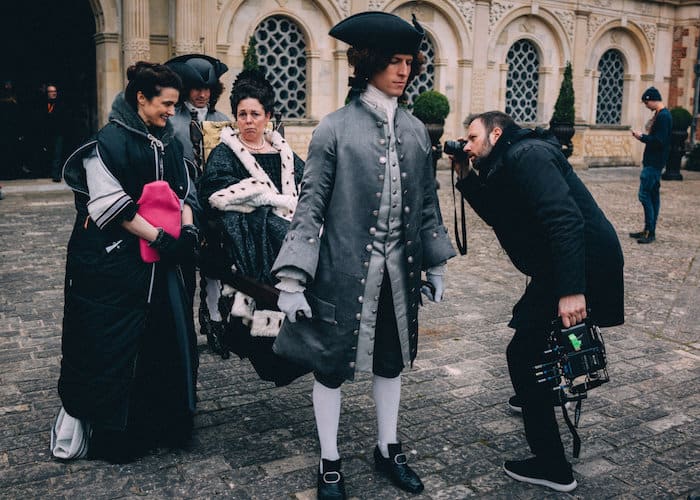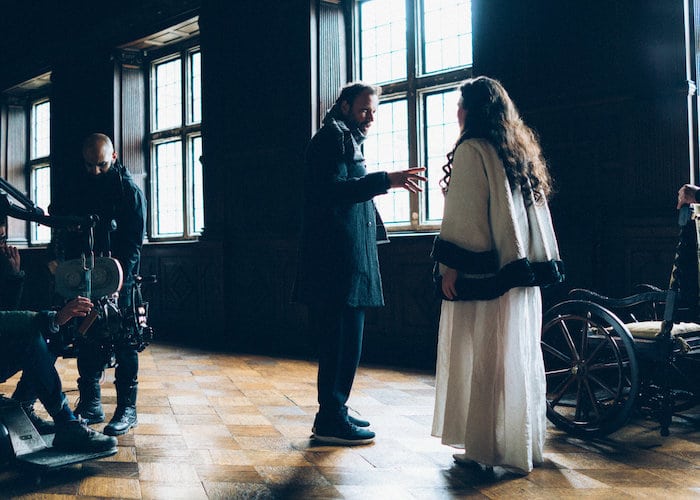With his trademark mix of creeping despair, brutal violence, and comedic timing, Greek filmmaker Yorgos Lanthimos came to international attention in 2009 with the Oscar-nominated Dogtooth, which took home the Prix Un Certain Regard at Cannes. Another Greek-language film, Alps, followed in 2011 and also did well on the film festival circuit. However, it was not until 2016 that wider American audiences got to know Lanthimos with his first English-language feature The Lobster. The pitch-dark dystopian sci-fi satire, which is about how societal pressures promoting domestic bliss only further doom us to a lonely existence, can be seen as one of the worst date movies ever or one of the best — if one should desire a vetting process.
Where The Lobster dabbles in science fiction, Lanthimos’s next film, 2017’s The Killing of a Sacred Deer, dabbles in horror, while still maintaining Lanthimos’ distinctive pitch-dark humor and deadpan dialogue. Now taking on a period piece with The Favourite, Lanthimos appears to be working his way through genres one at a time, all while maintaining one of the most consistently unique styles of any filmmaker working today. Managing to be versatile while maintaining a distinctive filmmaking voice is an incredible balancing act that few directors achieve. The following six tips help illustrate how he’s achieved this remarkable feat.
Film Keeps People Focused
While the digital takeover of filmmaking is pretty much complete at this point, a number of outspoken holdouts still remain loyal to the film cause. Common pro-film arguments include appreciating the value of film’s uniquely tactile qualities, as well as characteristics of the film image that its digital counterpart still can’t quite replicate. While Alps and The Lobster were both shot digitally “out of necessity,” Lanthimos says he would rather avoid shooting a movie in digital again if at all possible. For him, the benefits of shooting on film don’t just extend to a preference over digital in terms of process and outcome, but in the unique atmosphere shooting on film brings to the set, as he describes in an InCamera Exclusive interview for Kodak from January 2018 (at 1:13):
“You tend to be more attentive when you shoot on film because, you know, it costs more and everybody needs to be focused when you’re filming something. Everybody considers it something valuable and precious, so everybody’s focused.”
Make Sure People Are There for the Right Reasons
Speaking with The Skinny in October 2017, Lanthimos discussed that all-important decision: casting. In addition to noting that he would never cast, or even meet with, an actor who has never seen one of his films (“Why not watch one of my films?,” he asks, “It would save us both a lot of trouble. If an actor doesn’t relate to it, then we shouldn’t work together”) he names his first and foremost casting criterion:
“You have to start with people knowing that they are interested in the project and not doing it just to do a job or a part.”

Lanthimos directs Emma Stone in ‘The Favourite’ (Twentieth Century Fox Film Corporation; Photo: Atsushi Nishijima)
Humor Keeps People Thinking (Seriously)
One of the most recognizable elements of Lanthimos’ filmmaking style is his pitch-dark sense of humor, which permeates even the most brutal scenes of his films. More than just being a distinctive stylistic marker, Lanthimos explained that keeping a dose of humor in the mix, ironically enough, helps keep the audience engaged and thinking seriously, as he told Electric Sheep magazine in a 2010 interview:
“By employing a certain sense of humor, you essentially get more serious about things and show conflict more effectively than if you were overly dramatic or only violent because that’s a one-way approach that just forces audiences to watch something appalling. With humor, you can really make people think in many different directions, and it feels like a more existential experience.”

Lanthimos on the set of ‘The Lobster’ (Sony Pictures Releasing International)
Don’t Over-Analyze It
Lanthimos’ films consistently feature some seriously heavy content. He’s the kind of filmmaker who always makes movies that serve enough food for thought to feed several post-film discussions. Still, when asked about specific intentions or messages, he remains tight-lipped — not because there’s a secret he’s trying to keep, but because he purposefully avoids over-analyzing his own ideas, for reasons he explained when talking to The Atlantic in September 2017:
“I think if you analyze too much and have too many specific ideas, it just becomes a little bit too superficial, and then performances might become too self-conscious and project relatively narrow things. […] That approach limits the resonance of scenes in general.”

Lanthimos on the set of ‘The Favourite’ (Twentieth Century Fox Film Corporation)
Aim (the Camera) for Information
Lanthimos gave an hour-long masterclass at the 2012 Göteborg Film Festival (available in full on YouTube, see below) in which he addresses his entry into filmmaking and the trajectory of his career up to that point — and some quality filmmaking advice, including the following tip about camera placement (at 54:45):
“Try to place the camera somewhere where you get most of the information from there, so you don’t need to have too many shots and be too explanatory and expositional about the scene.”
The Audience Has the Final Say
As a filmmaker who likes to test the limits of dark humor with a generally distinctive style quite unlike anything else out there, Lanthimos’ films have tended to be polarizing. Every filmmaker juggles to balance various narrative and stylistic elements in the finished product. However, Lanthimos realizes that, at the end of the day, a filmmaker can never achieve a truly perfect balance of things because, as he told Birth.Movies.Death. in a May 2016 interview, perfection is in the eye of the beholder — and movies have many, many different beholders:
“It’s hard to know how your ideas are going to be perceived. It’s never going to work the same way on everyone. Some people think it’s ‘hilarious.’ Others say it’s much too ‘dark.’ Really, it’s neither and both. And I truly believe that it changes with each screening — there’s a certain kind of atmosphere and energy, almost like a live performance. People influence each other; so one screening will be filled with laughs while another is dead silent. And as the years go on, the film might affect you differently, based on what has happened between viewings. You can never claim that you’ve achieved a perfect balance, because it’s up to the people who watch it to decide.”

Lanthimos directing ‘The Favourite’ (Twentieth Century Fox Film Corporation)
What We Learned
With a string of acclaimed, thought-provoking films, Yorgos Lanthimos is one of the most intriguing cinematic talents working today. While his films have spanned a wide range of genres and subjects, he has tackled them all with his distinctive dark humor and unique cinematic style. The tips above demonstrate that this internal consistency across his films comes from a well-formed, deeply personal filmmaking philosophy — perhaps the single most important thing a filmmaker can have in developing a truly unique and memorable cinematic voice.
The post 6 Filmmaking Tips from Yorgos Lanthimos appeared first on Film School Rejects.


0 comments:
Post a Comment